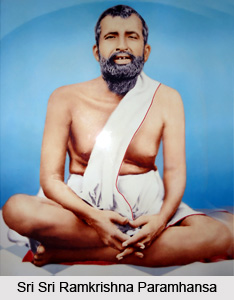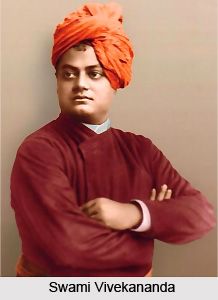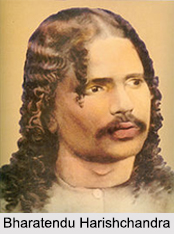 At a time when India faced the growing issues of differences in ideologies and caste system, the acquaintance between Ramakrishna and Vivekananda was considered examplary. The guru (Ramakrishna) and Vivekananda (disciple) seemed to be poles apart. While, Vivekananda was a product of modern university, widely travelled and acutely aware of the raging issues of his days; Ramakrishna was an illiterate Brahmin who took little or no interest in contemporary problems. If not for Vivekananda, Ramakrishna would not have been a household name in Bengal, far less outside. Infact, all through his life he marveled at the absurdity of his relationship with Ramakrishna. Vivekananda states that his master was his strong anchorage and that without him he would have never understood his own life as also of the larger world.
At a time when India faced the growing issues of differences in ideologies and caste system, the acquaintance between Ramakrishna and Vivekananda was considered examplary. The guru (Ramakrishna) and Vivekananda (disciple) seemed to be poles apart. While, Vivekananda was a product of modern university, widely travelled and acutely aware of the raging issues of his days; Ramakrishna was an illiterate Brahmin who took little or no interest in contemporary problems. If not for Vivekananda, Ramakrishna would not have been a household name in Bengal, far less outside. Infact, all through his life he marveled at the absurdity of his relationship with Ramakrishna. Vivekananda states that his master was his strong anchorage and that without him he would have never understood his own life as also of the larger world.
Differences that were either budding or had surfaced from time to time were being ignored. This was because either these differences could not be solved or because Vivekananda was dependent on his master for overcoming the terrible inner conflicts that had surfaced within him.

But at the same time the differences between them was apparent. The two strong personalities could not be compared. Though Vivekananda had high regards for his master, yet at several situations Vivekananda would interpret his master`s utterances in his own way and would find new meanings and substance in his life. Another difference that one can note was that Ramakrishna believed that social service was useless and that mankind should focus their attention towards realizing God. He was of the opinion that the creator was both distinct and superior to his creation, knowing him is equal to knowing the world. But, Vivekananda was of the opinion that service to man was the highest service to God.
After the death of Sri Ramakrishna, the young disciples went to live in a rented house in Baranagar. Although old, the house was far away from the noise and bustle of the city; and it was on the banks of the river Ganga. It was very close to the tomb of Sri Ramakrishna. So, the Mutt (monastery) was opened there. The young monks had two goals- salvation and the service to fellow men. Some young men left their homes and became monks and joined the Mutt. Narendra became a monk and headed the institution.
The two things that emerged from the teachings of Ramakrishna were: first was the view that the ultimate object of human life is to obtain God; the second was the belief that human will or design is powerless before him.






